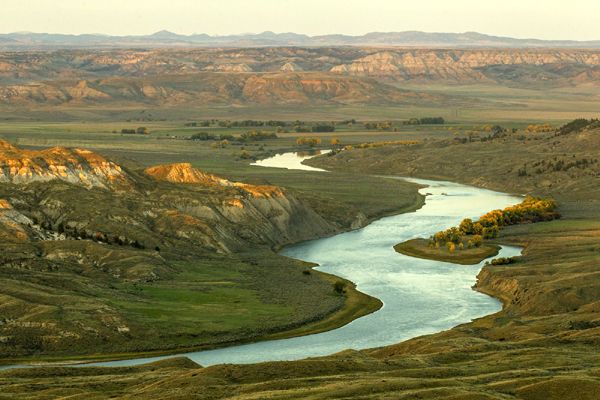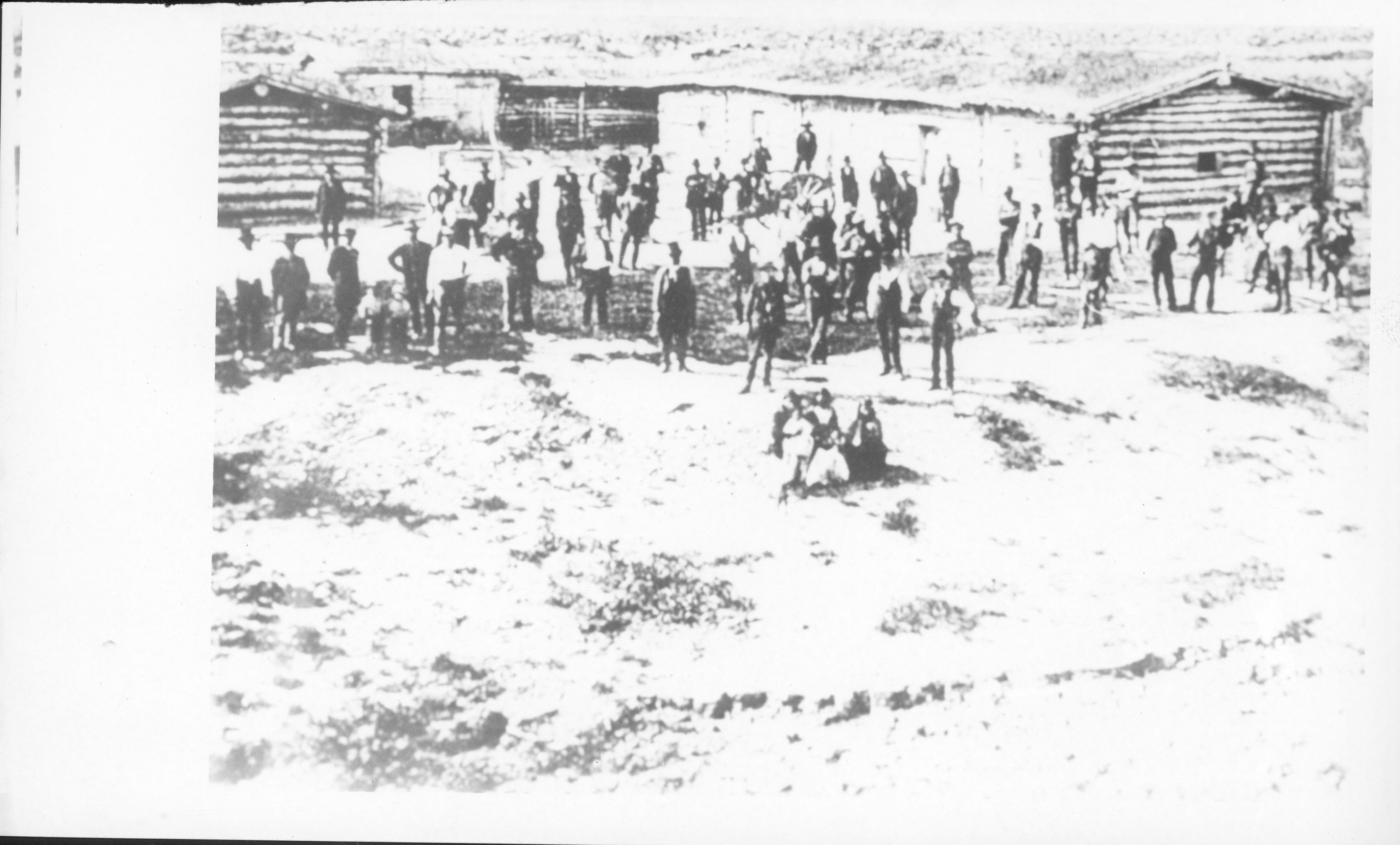
Echoes on the Missouri: The Ephemeral Legends of Fort Claggett, Montana
The American West is a landscape steeped in myth and memory, a vast canvas upon which countless legends have been painted – tales of intrepid explorers, defiant warriors, gold-crazed prospectors, and stoic pioneers. These aren’t always the fantastical beasts of old-world folklore, but rather the compelling narratives of human endeavor, resilience, and often, profound tragedy against an unforgiving backdrop. Few places encapsulate this tapestry of legend as vividly, yet as subtly, as the ghostly remnants of Fort Claggett, nestled in the rugged embrace of Montana’s Missouri River Breaks. More than just a dot on a historical map, Claggett stands as a poignant symbol of an era, a whispered legend of the fur trade, the steamboat age, and the untamed spirit of the frontier.
To understand Fort Claggett is to first comprehend its environment. The Missouri River, a liquid highway carving its way through the continent, was the very artery of westward expansion for centuries. But as it snakes through what is now central Montana, it enters a realm of stark, breathtaking beauty: the Missouri River Breaks. Here, the landscape erupts into a labyrinth of eroded bluffs, deep coulees, and remote badlands – a place so wild, so challenging, that even today it feels like a step back in time. It was into this magnificent, isolated wilderness that the legendary Corps of Discovery, led by Meriwether Lewis and William Clark, ventured in 1805. Their journals, filled with observations of towering cliffs, abundant wildlife, and encounters with Native American tribes, form the earliest written legends of this specific corner of America. Lewis, captivated by the dramatic geology, famously described the "most extraordinary scenery" of the White Cliffs, a section of the Breaks not far from where Claggett would later rise.
Decades after Lewis and Clark, in the mid-19th century, the demand for beaver pelts in Europe and the eastern United States sparked an economic frenzy that drew a new breed of adventurer to the West: the mountain man. These rugged individuals, often of French, American, or Native American descent, were the vanguard of the fur trade, living harsh, solitary lives, trapping beaver in the remote streams and exchanging their bounty for supplies at scattered trading posts. As the beaver population dwindled, the focus shifted to buffalo hides, and the infrastructure of the fur trade adapted. Steamboats, once a marvel of technology pushing against the Missouri’s powerful current, became the lifeblood of this new commerce, carrying goods upriver and pelts back down.

It was during this era, around 1862, that Fort Claggett emerged, not as a military installation with stone walls and cannons, but as a vital, bustling steamboat landing and trading post. Situated at the mouth of the Judith River, a significant tributary flowing into the Missouri, Claggett was strategically positioned. It served as a crucial transfer point for goods heading further into the Montana interior, particularly for the burgeoning gold camps that began to dot the landscape after the discoveries in places like Grasshopper Creek and Alder Gulch. Mining supplies – picks, shovels, flour, whiskey, tobacco – were offloaded here, destined for wagon trains that would rumble overland to destinations like Helena, Fort Benton (the "head of navigation"), and other boomtowns. In return, gold dust, buffalo robes, and other local products made their way downriver.
The "fort" in Fort Claggett was more a descriptor of its defensive capabilities, albeit rudimentary, and its commercial importance, rather than its architectural grandeur. Accounts suggest it was a collection of log structures – a trading house, storage sheds, perhaps a few cabins – surrounded by a palisade or stockade to offer some protection against the elements, the occasional bandit, or skirmishes with Native American tribes whose ancestral lands were increasingly encroached upon. Life at Claggett was rough, isolated, and governed by the rhythm of the river and the arrival of the steamboats.
The legends born here are not of grand battles or epic quests, but of the gritty reality of frontier life. Imagine the scene: a steamboat, perhaps the Helena or the Far West, its paddles churning, smoke billowing from its stacks, finally rounding a bend in the river after weeks of treacherous travel. Its arrival would have been an event, breaking the monotonous silence of the Breaks. Traders, Native Americans (often Crow, Blackfeet, or Salish, coming to trade furs and buffalo hides), and teamsters would converge, creating a temporary, boisterous hub of commerce and cultural exchange. Stories would be swapped, news from the "outside" devoured, and deals struck, often over copious amounts of "rotgut" whiskey. These were the legends of individual resilience – of the boat captains navigating shifting sandbars and powerful currents, of the traders haggling for pelts, of the Native Americans adapting to a rapidly changing world.
One of the most enduring legends associated with such posts is the complex and often fraught relationship between the traders and the indigenous peoples. For centuries, Native American tribes had utilized the resources of the Breaks, hunting buffalo, gathering plants, and navigating the rivers. The arrival of the fur traders brought new goods – firearms, blankets, metal tools – but also new diseases and devastating social disruption. Fort Claggett, like so many other trading posts, became a crucible where these two worlds collided, sometimes peacefully through trade, sometimes violently through misunderstanding and conflict. The echoes of these interactions, of treaties made and broken, of alliances forged and shattered, form an indelible part of the region’s legendary past.
Fort Claggett’s prominence, like many frontier outposts, was fleeting. The fur trade, already in decline, received its final blows from over-trapping and changing fashion trends. More significantly, the completion of the transcontinental railroad to the south in 1869, and eventually the expansion of rail lines into Montana, rendered the long, arduous steamboat journey up the Missouri increasingly obsolete. By the late 1870s, Claggett’s importance waned. The buildings, never intended to be permanent, were dismantled, scavenged for their timber, or simply left to decay, slowly reclaiming their materials back into the earth from which they came.
Today, Fort Claggett is not a grand, restored monument. There are no imposing walls or bustling recreations. Instead, it is a largely undeveloped archaeological site, a faint whisper on the banks of the Missouri within the Upper Missouri River Breaks National Monument. A historical marker might identify the approximate location, but the visible remains are minimal – perhaps some scattered foundations, a few depressions in the earth, barely discernible to the untrained eye. And yet, it is precisely this ephemeral quality that enhances its legendary status. Without the distractions of modern interpretation, the site invites the imagination to fill in the blanks, to conjure the ghosts of steamboats, mountain men, and Native American encampments.
The legends of Fort Claggett, therefore, are not concrete narratives of singular heroes, but rather the collective spirit of an era. It is the legend of the Missouri River itself – a force of nature that shaped destiny. It is the legend of the mountain man, independent and rugged, embodying the spirit of self-reliance. It is the legend of the steamboat pilot, mastering a treacherous waterway. It is the legend of the Native American tribes, whose resilience and deep connection to the land persisted despite profound challenges.
Visiting the site today, perhaps by canoe or small boat, one is struck by the profound silence, broken only by the cry of an eagle, the splash of a fish, or the gentle lapping of the river against the shore. It is a silence that speaks volumes, a quiet testament to the passing of an era. The legends of Fort Claggett are not written in stone, but etched into the very landscape – in the ancient bluffs that witnessed it all, in the relentless current of the Missouri, and in the wind that whispers through the sagebrush, carrying the faint echoes of a vibrant, vanished past. These are the enduring legends of America, not always loud or dramatic, but deeply resonant, reminding us of the human stories that shaped a nation in its wild, formative years. Fort Claggett, a forgotten outpost in the heart of Montana, remains a powerful, if subtle, gateway to understanding them.



